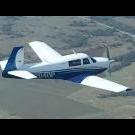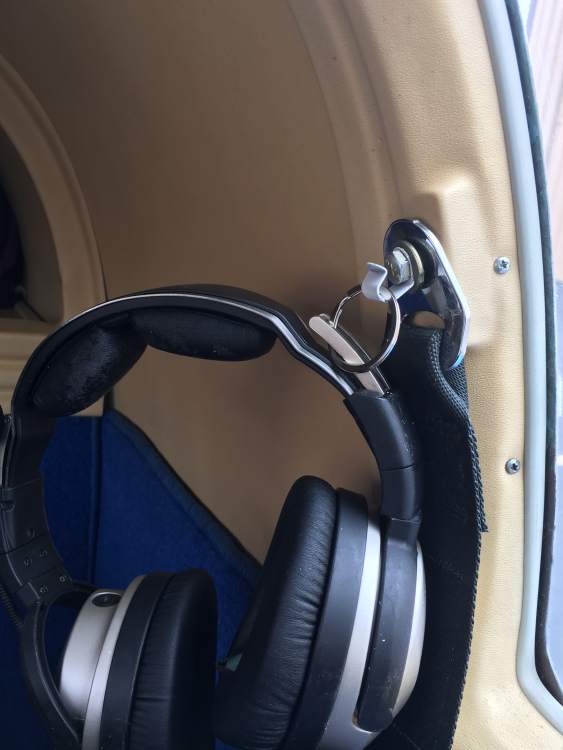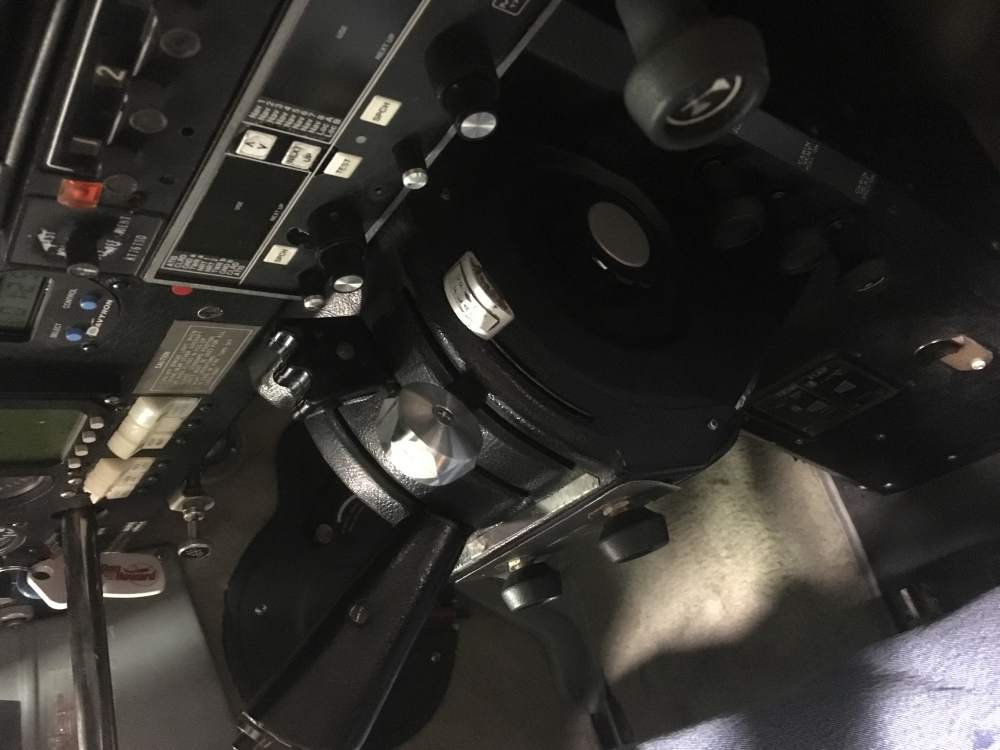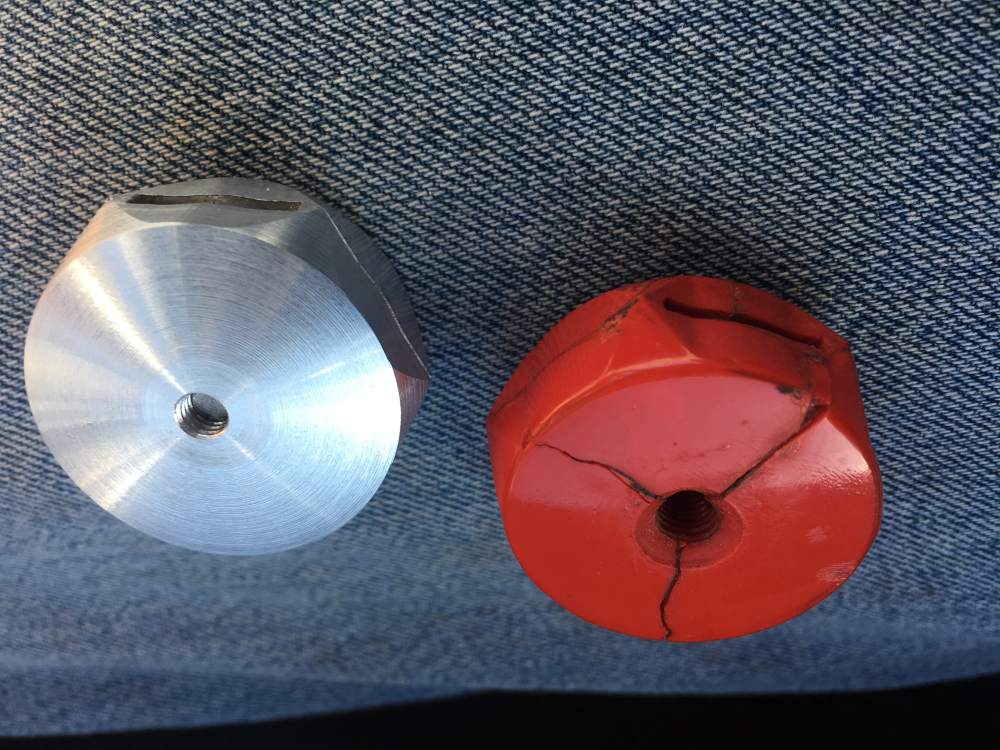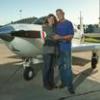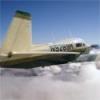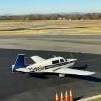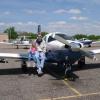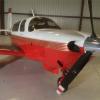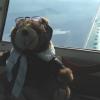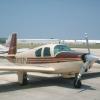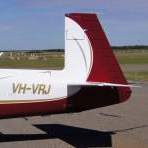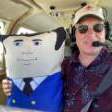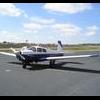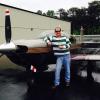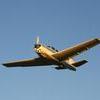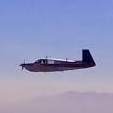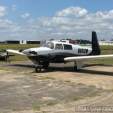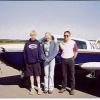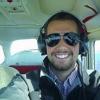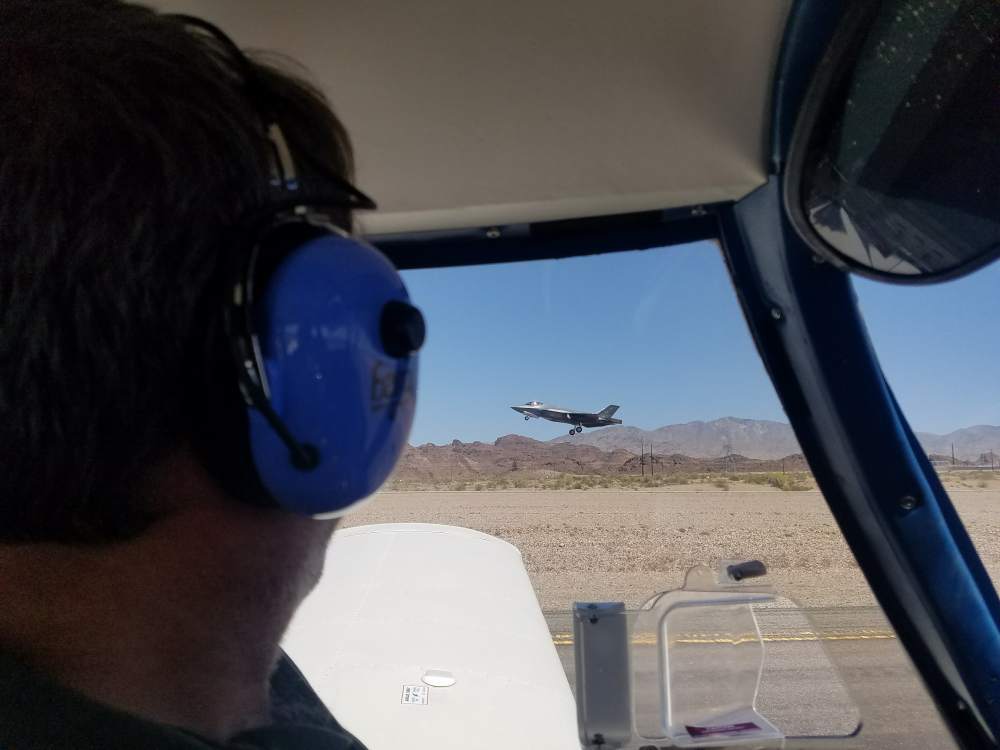Leaderboard
Popular Content
Showing content with the highest reputation on 04/11/2018 in all areas
-
5 points
-
3 points
-
They reduce spanwise loading. Since the bending moments are changed, the aircraft can carry that fuel at the tip for free since it doesn’t increase the load on the center section. Its similar in effect to reducing wingspan.3 points
-
While I do not have any empirical data to share to validate this other than observations, race car engines typically let go at power reductions. Granted, these are highly stressed vs our ol tractor motors. Have I mentioned air cooled internal combustion engines are the work of the devil? What I preach (teach) is keep those money knobs all forward until after the kill zone at Vy. Kill zone = <800' AGL Then I suggest keep them all forward except mixture (for NA engines) until cruise altitude (exception 231 and other turbos...for example, Ill reduce the Bravo to 34 mp for cruise climb) Your POH is a friend here3 points
-
I recently sent my 3 blade Hartzell out for inspection and reseal. They statically balanced as part of their service. They suggested I dynamically balance when it got remounted which I just completed. I was completely blown away what a difference this made. I literally can put a glass of water on my dash and there would be no movement. Best $340 I ever spent. Sensenich prop at KLNS (Lancaster) did the work and takes 1-2 hours. Great restaurant next door too. Sent from my iPhone using Tapatalk2 points
-
2 points
-
2 points
-
I have since done so. I simply posted way back when and haven't been following the thread much. I missed that sign up thing. I did it this morning though.2 points
-
I always try to reduce or increase power in any situation very smooth and slowly. I’ve flown with pilots who make quick power adjustments and some who make smooth slow power transitions. My first flight instructor who had some 26,000+ hours would jam the power in on touch and goes in the 172. In her career she has had one engine failure due to an improperly installed helicoil for one of the spark plugs. Personally, without imperial data, we should adjust power smoothly if at all on takeoff. The crankshaft, cams, cylinders, prop, and all other moving parts have a ton of inertia that is affected highly with adjustments of power. I like to get everything up to operating temperature as well before takeoff. Having an engine that is cold being asked to pull my 2740 pound aircraft up into the sky is putting a lot of strain as those parts warm up and are pounded on. I don’t know the stats on this but just seems to make sense to me. Also, MX, engine monitor, and if something just “ain’t right,” don’t go.2 points
-
Is your engine "loping"? http://www.donmaxwell.com/publications/MAPA_TEXT/External_Hoses/External_Hoses_Tubes.htm "Lycoming powered, fuel injected Mooney’s, share a distinctive, “loping” sound at low power settings during taxi and idle operation. The loping sound is caused by system leakage at the induction drain valve. A small amount of “lope” is normal. Excessive “lope” can be cured by removing the drain valve hose at the drain fitting and spraying the inside of the fitting with Tri-flow, corrosion X or solvent. Fuel dye and oil cause the ball to stick and not seal properly causing rough low rpm engine operation."2 points
-
2 points
-
I certainly don't mean to be insulting to you or anyone else here. I should probably impose a "no posting after mid-night" rule on myself. This community truly is such a wealth of information and what I've learned from all of you has been priceless. I certainly understand different missions, different budgets, and different priorities. But it's painful to see so many on this forum who have passed up the $45K Mooney in favor of a $35K Mooney that has good bones and are now trying to figure out how to upgrade or even just replace/repair simple things like radios, autopilots, gps, etc. and come to the painful realization that it will cost $20K - $30K to do it.2 points
-
I would caution against using the seat back as a hand rail. The steel Mooney seat frames are not the most robust things.2 points
-
Me too - the Bose QC20 - at the non aviation cost of $250 - or I get em' used (as new) on eBay for $175 I think. LOVE em! I use them whenever I travel commercial, any flight long enough that they show you movies and I do arrive just that much more refreshed from sitting in a calm quiet environment. I have tested them in small GA piston prop environment and they work quite fine well enough and I was wondering why they didn't make it for aviation - and now they have. My 16 year uses them sometimes when he travels with me watching movies etc.2 points
-
In the above graph I would agree IF you are talking an RPM GOVERNED by throttle position (there by a lower manifold pressure). With RPM governed by LOAD (propeller control, no reduction on MP) I would disagree. The above chart shows no distinction. We need more data on the chart above.2 points
-
I think we're all in violent agreement here. There are lots of ways a pilot might be less safe than other pilots. There are lots of variables such as personality, attention span, hours per year, recency of experience, to basic hand eye coordination, etc. We're all different in ways that are out of our control. But I think we would all agree that training is good. And more training is better. And a pilot who holds an Instrument rating has had more/different training than one who hasn't. There are exceptions of course, someone might be VFR only but have hundreds of hours of formation training, or other training. But in general Instrument pilots have more training than VFR only pilots. Those of us who are instrument pilots understand that there seems to be a misconception that IFR pilots are flying in dangerous weather and shooting approaches to minimums and that is therefore inherently more dangerous. When in actuality, using myself as an example, I fly in IMC regularly. But I rarely, maybe once per year, get an actual approach that could even qualify for currency. I have to get my 6+1 under the hood just because as an amateur pilot I can't find enough "weather" to stay current in actual IMC. So the reality the vast majority of my flying is in very easy and safe weather, I'm just doing it with more training.2 points
-
I believe they are safer, but maybe not for the seasons some think. By virtue of obtaining an instrument rating they are safer (overall and generically speaking) simply because they've had formal, recognized and calibrated training that makes them more precise and with a greater knowledge base regarding many different aspects of piloting.2 points
-
Good idea. And rename it just for fun. TBM probably would work, would not infringe the Mooney trademark. Oh wait....2 points
-
I don't touch anything on the climb out, except the mixture when appropriate, until reaching top of climb (as espoused by Bob Kromer).2 points
-
1 point
-
1 point
-
The required text is in your flight manual/poh. Here's a discussion that covers most of this topic:1 point
-
1 point
-
I also watched the AvWeb video. The Bose rep stated the A20 is their most popular aviation headset and expect it to remain that way, implying continuity with no change to sales. A20's are safe.1 point
-
It will be close. Last year the Mooney Caravan flew in with 51 Mooneys. Of course, getting 50+ Mooneys on the ramp is one thing, getting them all in the air in formation is a totally different animal.1 point
-
Not that it is likely a factor for folks here, but the advise I have always heard is that it generally not advisable to do home equity loans for cars, boats or luxury purchases because a default risks the home.1 point
-
The Usual response... Got any engine monitor details to share? Best regards, -a-1 point
-
all interesting facts, but I doubt I am going to be using a Microsoft surface tablet running foreflight more often than an ipad in the cockpit.1 point
-
Unless your based at Austin Exec.... Sent from my iPhone using Tapatalk1 point
-
If I wasn’t 1,400nm to the east I would fly in with you! Someone should step up. A beautiful F, good company, and a Mooney fly-in.. The makings of a great day. Cheers, Dan1 point
-
They all happened within a few months of owning my airplane, which had some history of neglect, or "deferred maintenance" as some might say, and bad decisions by maintainers/inspectors that I think were contributing factors. Once the issues were fixed it has turned into a very nice little bird. I knew going in there'd be issues as I bought it as a fixer-upper. It was a little more adventurous than I'd anticipated, but the experience has actually been very good. Traffic Pattern Altitude. I hadn't heard it before and when I was getting current again a couple of years ago my CFI used it and I had to ask.1 point
-
I'm looking forward to seeing pictures of that! That may be more than you see together at OSH.1 point
-
FWIW, of the 30 or so times I've flown through there. Once on a lark I called center and asked if White Sands was hot. They said it was not and I could fly through anywhere I liked. There is some bizarre stuff down there.1 point
-
My TSIO-360 does not like Champion plugs at all. It doesn’t idle smoothly and LOP operation became difficult at times. Additionally, I’ve had a number of Champion plugs fail, some in as little as 50 hours. I tried the Tempest Massive Plugs about 300 hours ago. The engine idles better, LOP is now just plain simple and I haven’t had to replace a plug yet. I’m pretty happy with their performance. I have not used fine wire plugs yet but, probably will when the engine is overhauled in another 200 hours.1 point
-
1 point
-
It is Spring in Texas, so the weather can change fast. Saturday’s forecast for Redbird is wind out of the Northwest 15-20, gusting to 35. Since one of the things we do in Texas is ride bucking bronco’s, maybe some of you will be accustomed to it.1 point
-
Best method of entry for me is Stand on wing walk facing the door Place right foot on the floor in front of the co pilot seat Reach in with left hand and grasp grab handle on the co pilot a pillar swing left leg in to either sit in co pilot side or swing left leg far enough to sit on the pilot seat and bring right leg in place1 point
-
That would be one of the worst things to do. On takeoff, you want to move the peak cylinder pressure to later in the downstroke to keep cylinder pressures and temperatures low. The 2 ways we have control to do that are (1) keeping the rpm high to have the burning mixture peak further in the downstroke and (2) running overly rich, which slows the combustion speed to have the same effect.1 point
-
Neither. I fly to reach destinations more quickly so I can recreate.1 point
-
I almost always end up talking to “high altitude” controllers in the FL’s. When dropping my Lancair off for final body work and paint my best friend was flying my Rocket down at 12k the bring me back home. We were never on the same frequency the whole trip except take off and landing. I DO feel much safer in the pressurized Lancair with a low cabin pressure alert in the FL’s than in the Mooney on O2. If I wasn’t near the end of my Mooney flying days I would research an affordable option for continuous O2 sat’s monitoring. We are clearly more at risk up high without some type of continuous monitoring of our safety up there. Tom1 point
-
Somewhere around half of what you want has been done: Comedians in Cars Getting Coffee1 point
-
Probably should note the models...I’d bet almost all turbo drivers fly IFR, and vintage would have the largest % of VFR.1 point
-
1 point
-
I just thought it was the viscosity is lowered by various byproducts (water, avgas, etc) that results in more oil being blown out?1 point
-
Sure if you want to spend the money for the STC (new certification by the FAA). The cowling will be different. The balance of the aircraft will be different, remember the K engine weighs one thing and the normally aspirated weighs another, the K is designed to balance with the six cylinder Conti and its accessories in place, not the 4 cylinder Lyc. New exhaust, not just the engine. Maybe you could keep the brake master and piping and the vacuum pump, but new everything else frankly, firewall forward. And why would you want to?1 point
-
I did fail to address the "clean" wing concept. The 67-68 models (at least the E and F) had flush rivets up until the area where the air would be expected to separate from the wing and had flush inspection panels. This was changed in 1969 when many flush rivets were replaced by button head rivets to save cost and the flush inspection panels were replaced with surface mounted panels. These cost saving measures were reversed in the J models. John Breda1 point
-
No, I am not talking about sushi here. My instructor tells me the J can do a barrel roll effortlessly. What is the best way to accomplish this? My instructor says it will be started with nose high attitude. Who can attest to this?1 point
-
,All right folks. We are going to have a Fly-in at Dallas Executive, (that's Redbird to you old guys) (RBD), on Saturday, April 14. We will plan on having people begin to show up at or about 10:00 AM, with lunch anticipated at about 12:00. We will eat at Delta Charlie's restaurant in the terminal. (pretty decent food at fairly reasonable prices.) They usually push table together for us, and have plenty of room. The City took over the self serve pump at RBD and have not opened it up for business. I am beginning to question whether they ever will. I will contact the FBO and see if they will offer a discount for anyone needing fuel. Before, they offered one, but it was not enough to get too excited about. Put this on your calendar.1 point
-
1 point

